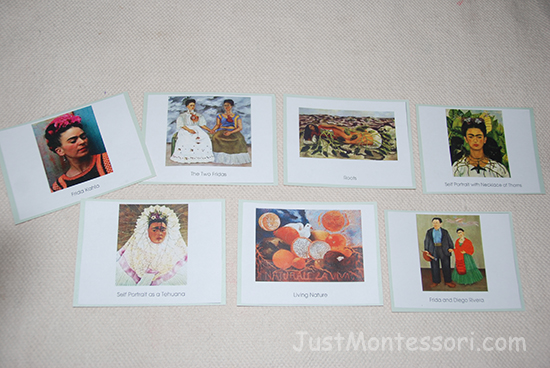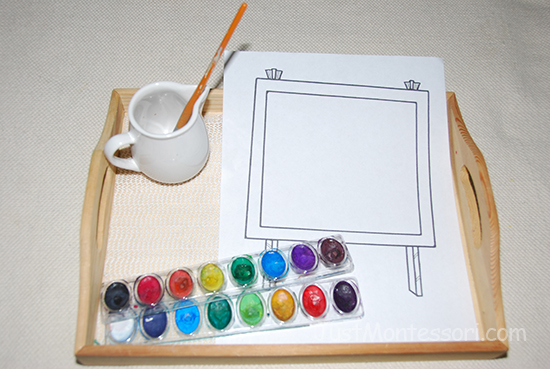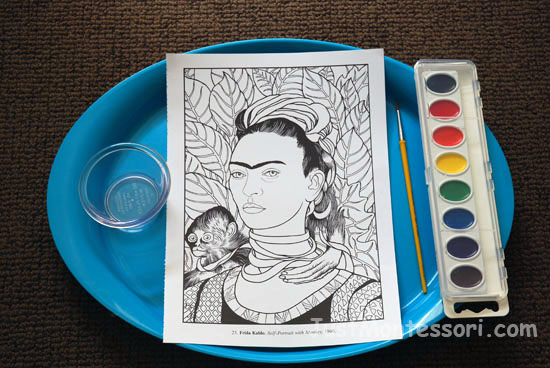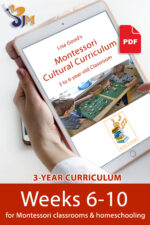Book choices for today:
Frida Carmen Bernier-Grand
Frida Kahlo Jill Laidlaw
A Garden to Dye For Chris Laughlin
Geography: (first circle)
Need for lesson – Pictures of Frida Kahlo’s paintings of self portraits (can be found in a calendar from or library books) and an easel set up for self-portrait paintings (include a mirror), and Frida Kahlo Art Set.
Art 3
We are going to talk about a famous painter from Mexico today. Which continent is Mexico in? Her name is Frida Kahlo. She was born over 100 years ago in Mexico. Something sad happened to her, which led to her painting. When she was a teenager, she was riding the bus and there was in an accident. Many of Frida’s bones were broken in her body. It took a long time for all those bones to heal and so she spent a lot of time in bed. Her mother had a special easel made for her and she used her dad’s paints to paint with. One of the things she painted the most were self-portraits. What is a self-portrait? It is a painting one would make of them self. When she was asked why she painted so many paintings of herself she said, “I paint myself because I am so often alone and because I am the subject I know best.” Let’s look at some of her self-portraits.
At the easel today if you would like to paint a self-portrait you can. We drew pictures of ourselves before, but now we are going to use an easel and paints like Frida used to.


Another idea, is to use a picture of an easel for children to paint onto also.
Additional Works:
Frida Kahlo Water Coloring – I bought a coloring book from Dover Publications on famous artist. I like to put the pictures with water colors for the children. They can color them also.

Science: (second circle)
Need for lesson – White sheet cut into small squares – one for each child, 5 large beets, 4 large onion, purple cabbage, vinegar, liquid soap, baking soda, medicine droppers, 3 bowls, 3 or 4 additional bowls of smaller size, and a clothes rack for hanging white sheet squares (tip: if you can, use clear bowls, since it is better for the children at circle see the colors and how they will change)

At home, prepare food dyes – boil beets in 8 cups of water to make purple water, the skins of the 4 onions in 8 cups of water to make brown water, and boil cabbage the same way to make additional bluish/purple water. Let these simmer at last an hour – the longer they simmer – up to 2 hours – the better. Bring to school in bowls ready for lesson along with one sample of each vegetable boiled.
Science 21
We have been talking about primary and secondary colors. Tell me the name of a primary color? What about the name of a secondary color? There is a way to make colors using items such as vegetables, berries, or flowers. A long time ago that is how wool or cotton was colored to make clothes. We have three kinds of vegetables; a beet, cabbage, and onions. At my house I took these vegetables in put them in a pot of water and cooked them for a couple of hours on the stove. As they cooked, the vegetables turned the water different colors. The colored water from the pots is in these bowls. This one is the cabbage water, this is the onion water and here is the beet water. I am going to take some of the water from each of the bowls and add it to another bowl.
Now these liquids that were made from the vegetables all have something inside of them called indicators. If we add an acid to these vegetable juices that have indicators, I wonder what will happen. Let’s try it. We have some things we are going to add to the juices. Lets add vinegar to one of small bowls. (I like to call children up to take turns.) Let’s add some liquid soap to another…and baking soda in this bowl. Wow! What do we see happening to our vegetable juices?
We can use these vegetable juices to color or dye wool, cotton, or fabric. I have a white fabric square piece for all of you. When your name is called come get one and dip in the color you would like to have for your piece. We are going to leave them in the vegetable juice for the rest of the day and then take them out and see how they look. Do you think they will change from white to another color? (Use a Sharpie to write child’s name on square piece).
Buy Weeks 6-10 PDF
-
 (C) Weeks 6-10$25.00
(C) Weeks 6-10$25.00


